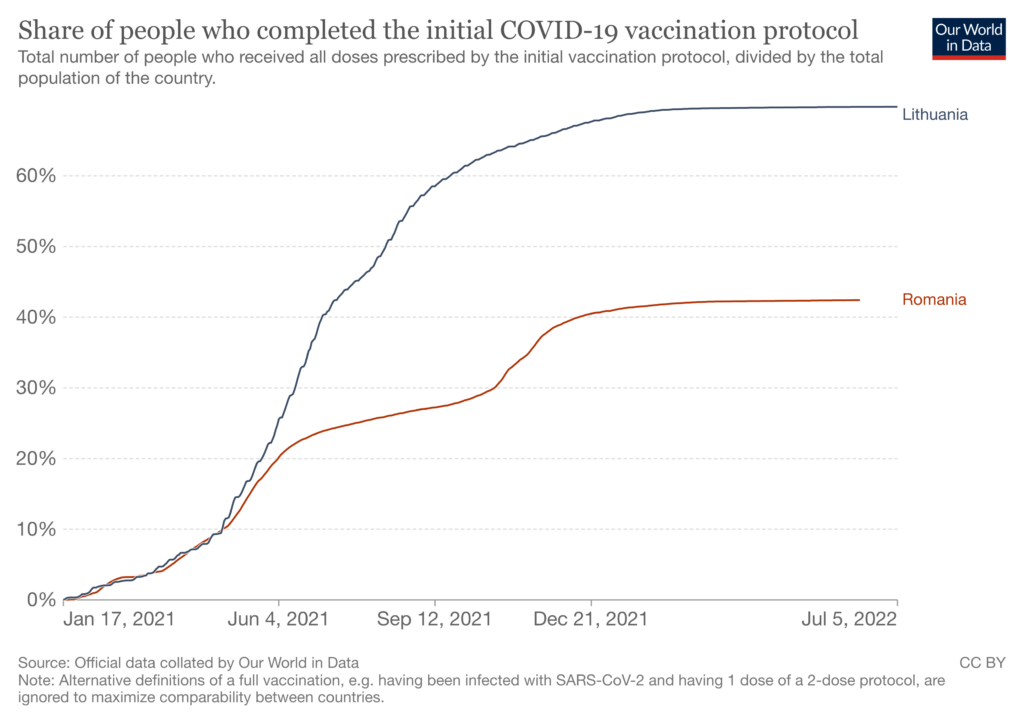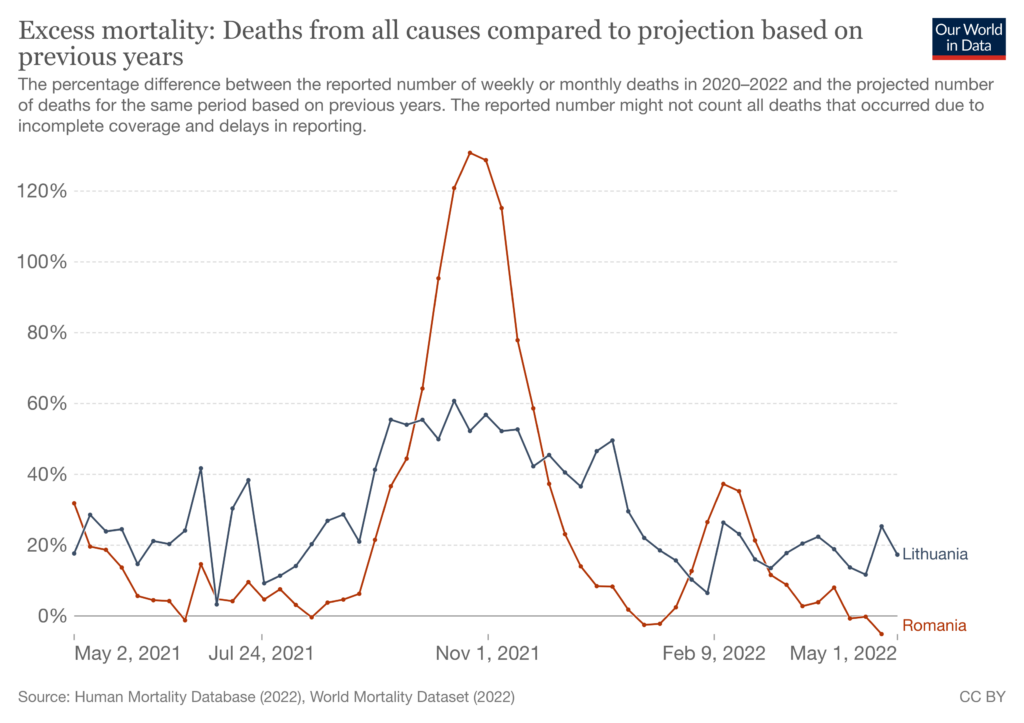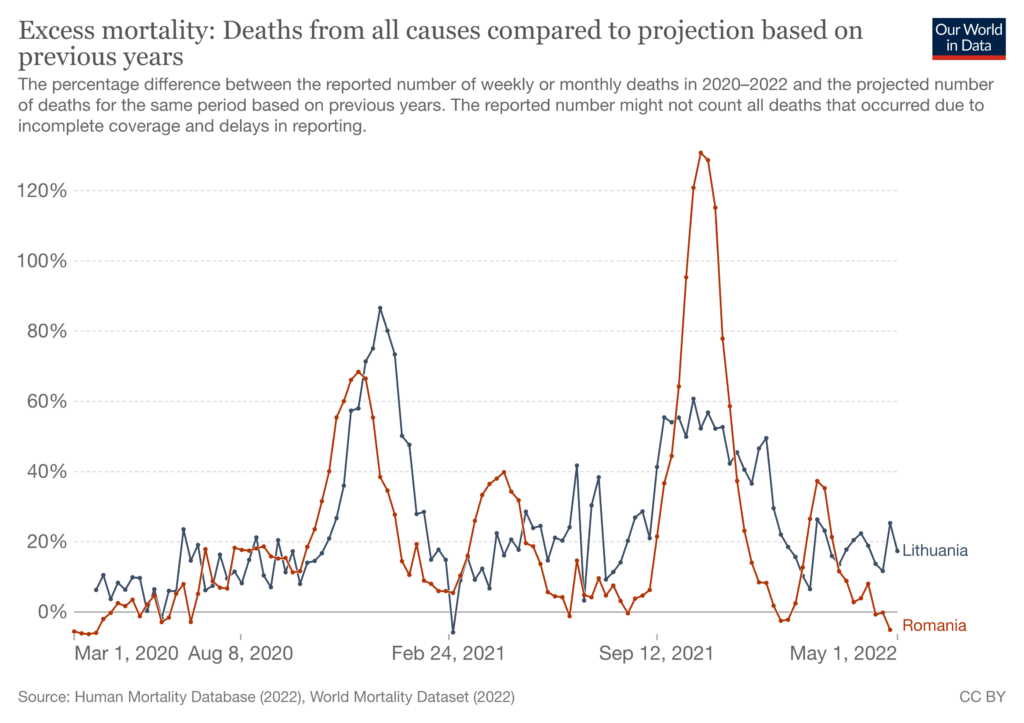Evidence from Europe suggests the vaccines did save lives.
The EU country with the highest excess mortality, Bulgaria, also has the lowest vaccination rate. By the end of 2021, only 36% of Bulgarians over 60 had been doubled vaccinated. Meanwhile, the EU country with the lowest excess mortality, Denmark, is one that managed to keep deaths to a minimum until completing the vaccine rollout. As of January 1st, 99% of Danes over 60 were double vaccinated.
However, this does not mean the vaccines’ effectiveness against death is as high as 90%, or even close to that. Numerous countries around the world have seen large spikes in excess mortality after their vaccine rollouts. These spikes invariably coincided with waves of Covid infections, showing that – despite high levels of vaccination – many people were still dying.
One interesting case study is Lithuania, which has the second highest excess mortality in the EU. You might assume, therefore, that it would have a low vaccination rate. But it doesn’t. By the end of 2021, 78% of Lithuanians over 60 had been double vaccinated – the highest level in Eastern Europe.
Compare Lithuania to another Eastern European country, Romania. As the chart below indicates, the vaccine rollout was proceeding identically in the two countries until the end of April 2021 – when Lithuania jumped ahead.

By the start of September, less than half as many Romanians had been double vaccinated. And as of January 1st, only 46% of Romanians over 60 were double vaccinated. So that’s a disparity an elderly vaccination rates of 32 percentage points!
However, if we track excess mortality since the countries’ vaccine rollouts diverged, we see that it was actually higher, on average, in Lithuania. (Note: although the peak is higher in Romania, the average is slightly higher in Lithuania.)

Zooming out, this can’t be explained by a ‘catch up’ effect: the two countries’ saw similar levels of excess mortality during the first year of the pandemic. Lithuania saw a bigger peak in the winter of 2020, but Romania saw a bigger peak in the spring.

Nor can it be explained by Romania being richer, and having higher quality healthcare. As a matter of fact, Lithuania has a substantially higher GDP per capita – $46,000 versus only $37,000 in Romania.
Two peculiarities of Lithuania’s series are the spikes in June and July of 2021, when the rate of Covid infections was low. These spikes may have been caused by hot weather, though a search for “heat wave” during the relevant time period did not yield any results. If the two spikes were excluded, excess mortality would be somewhat greater in Romania.
Although Lithuania and Romania began their vaccine rollouts at the same time, Lithuania went on to vaccinate a much greater share of the population, including a much greater share of the elderly. Yet in the year afterwards, excess mortality in the two countries was similar – an observation that can’t be explained by wealth or ‘catch up’ effects.
Generally speaking, countries with lower vaccination rates have seen higher levels of mortality. However, even very high vaccination rates have been not been sufficient to prevent mortality from spiking – casting doubt on claims the vaccines are near-perfectly effective against death.
This post has been updated.











To join in with the discussion please make a donation to The Daily Sceptic.
Profanity and abuse will be removed and may lead to a permanent ban.